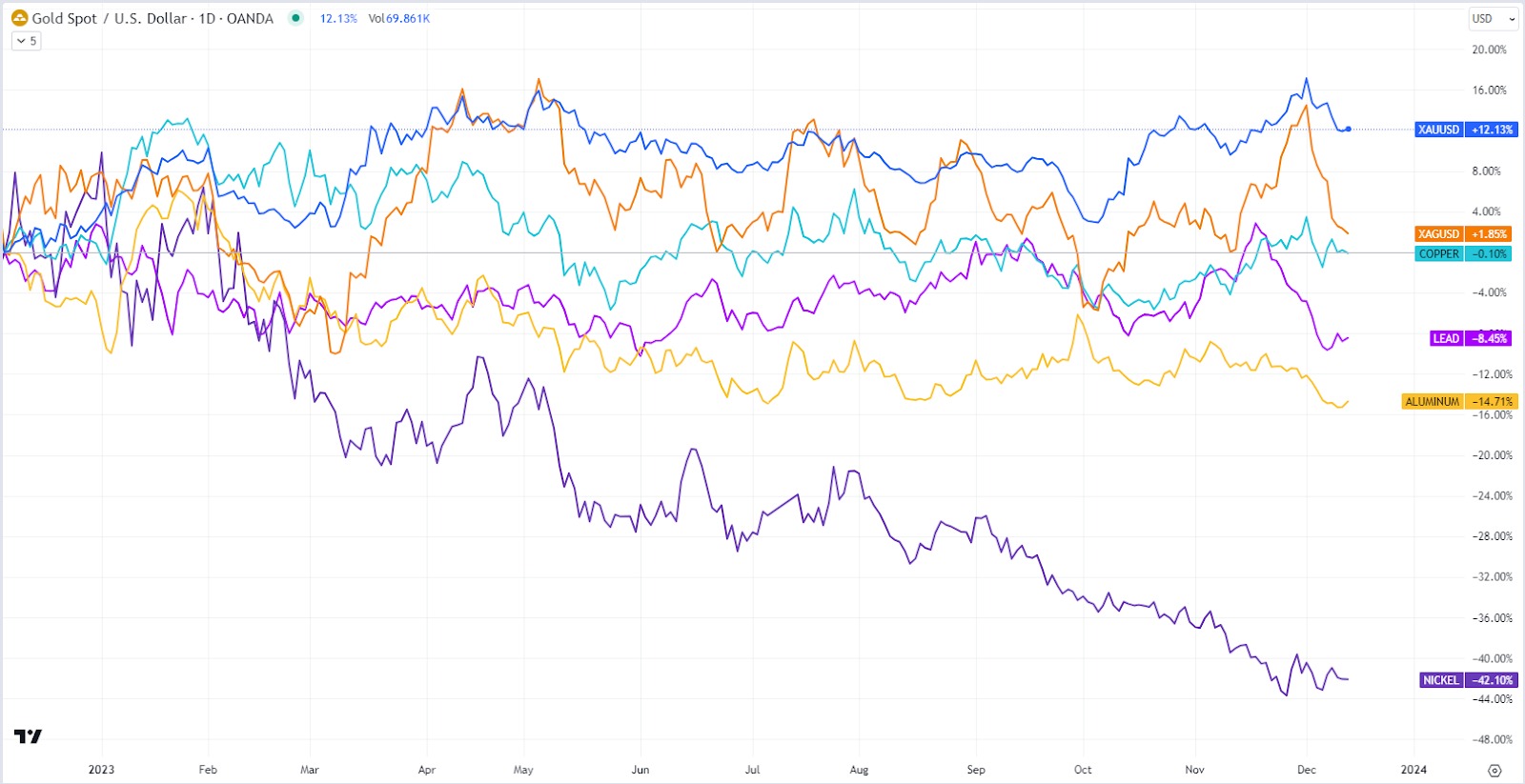
The trading of metals in the global economy is one of the most substantial and significant areas, given the essential role of metals in various industries. There are dedicated metal exchanges, with the London Metal Exchange (LME) being the most renowned. Simply put, it serves as a specialized trading platform for buying and selling metals and related products through contracts for future metal supply.
A variety of metals, each with diverse industrial applications, are traded on the stock exchange. Notable metals include Gold, Silver, Copper, Aluminum, Nickel, and Lead.
Gold (XAUUSD) is one of the most valuable metals and is used in jewelry production, medicine, and electronics, and remains a popular investment choice.
Silver (XAGUSD) is widely used in the jewelry, medicine, and electronics industries, with major companies like Advanced Micro Devices, Intel, and Nvidia relying on it for microchip manufacturing.
Copper (COPPER) is vital for the electrical engineering and construction industries. Unfortunately, it is not so popular in the market, but it is pretty standard both in the heavy industry and in the creation of chips due to its high conductivity and fusibility.
Aluminum (ALUMINUM), a lightweight and durable metal, is crucial in aerospace, automotive, and construction industries, with Tesla, Ford, and Boeing being notable consumers.
Nickel (NICKEL) is essential for stainless steel production and battery manufacturing, making it a sought-after resource for electric vehicle manufacturers like Tesla.
Lead (LEAD) plays a critical role in battery production, and construction, and has applications in medicine for radiation protection.

Metal trading on the exchange can be physical, involving the supply of real metal, or paper-based, exclusively through metal futures. Paper trading, constituting two-thirds of all trading volumes, is the primary focus in stock trading.
Exchange trading in metals presents opportunities and advantages for producers, consumers, and investors. It offers flexibility and risk management for producers and consumers dealing with metal price fluctuations, favorable terms through futures contracts, and access to global markets. Investors benefit from portfolio diversification by including metal-related assets and seeking high returns through speculative operations with metal futures.
However, like any exchange trading, metal trading involves risks such as price fluctuations, liquidity risks, and potential manipulations by prominent market participants.
